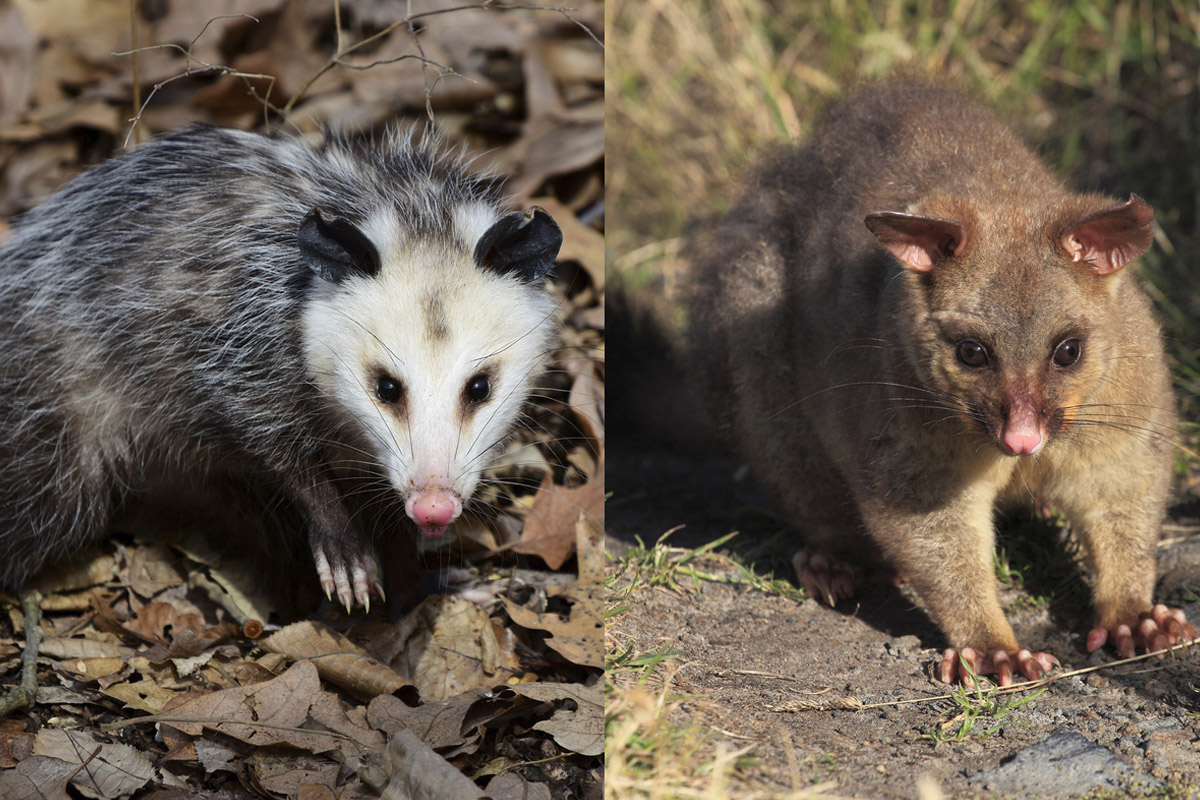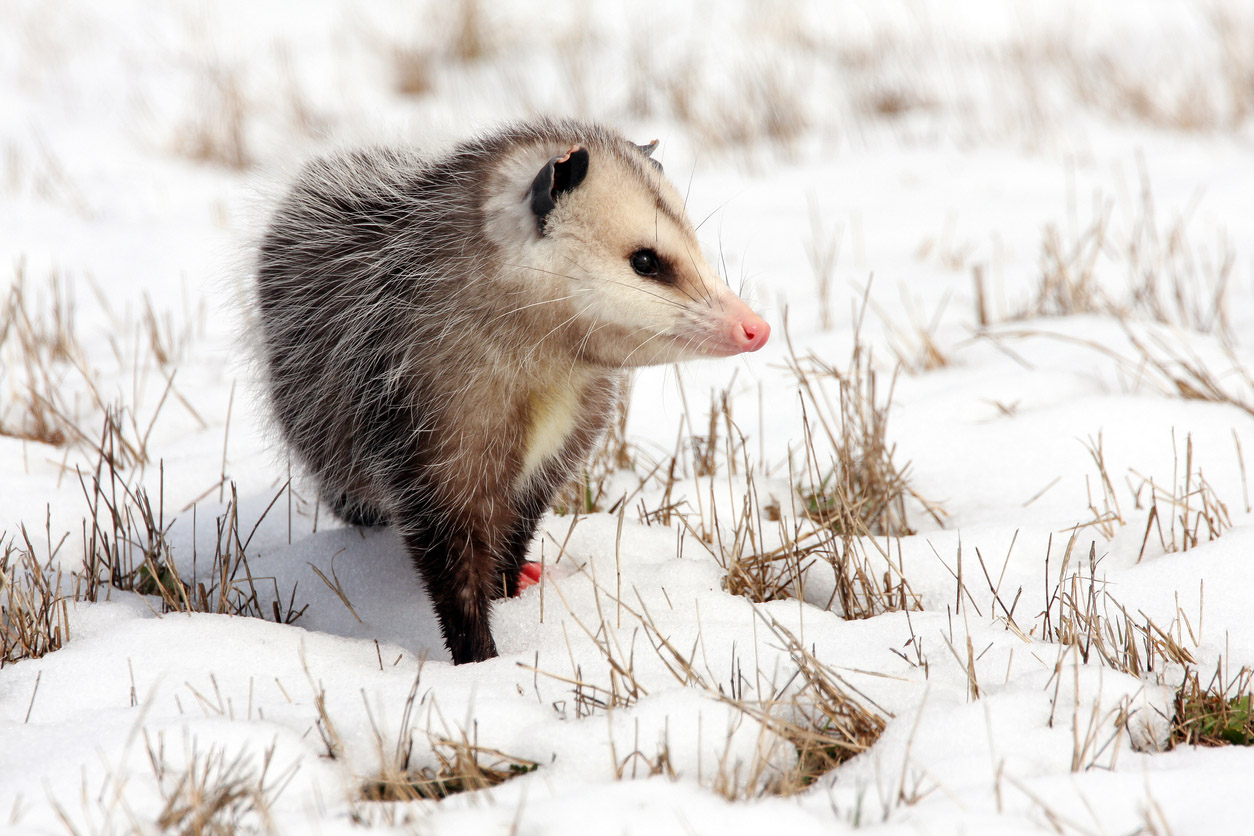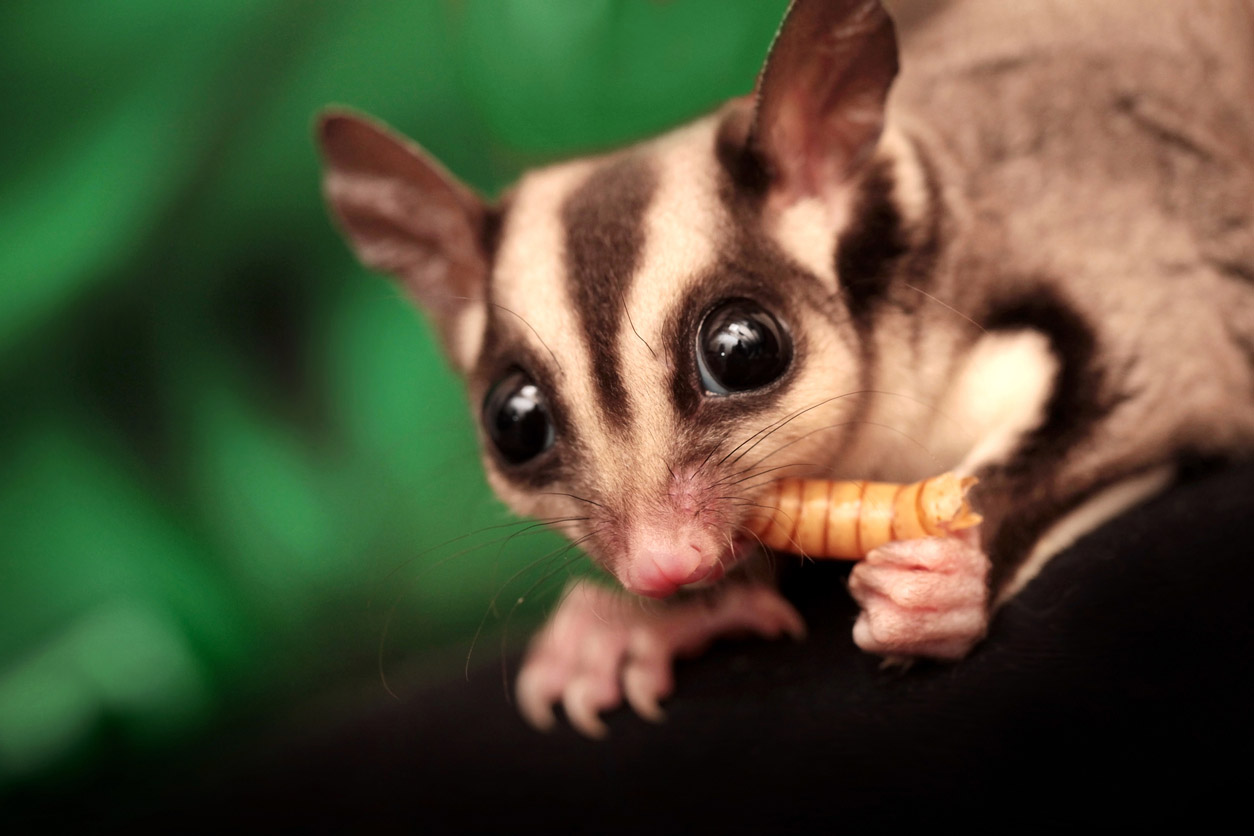

We may earn revenue from the products available on this page and participate in affiliate programs. Learn More ›
What You Need to Know
- Opossums are exclusively found in North America, whereas possums are native to Australia, New Zealand, and China.
- Opossums can be further differentiated from possums by their hairless tails, larger size, pointed white faces, and course fur.
- There are many kinds of possum, but the Virginia opossum is the only variety of opossum.
- The familiar opossum behavior of “playing dead” is not characteristic of possum species.
People easily confuse possums and opossums. These small marsupials have names so similar that they’re often used interchangeably. Even Merriam-Webster notes that both names colloquially refer to the Virginia opossum present in North America and that the word “opossum” can be pronounced with its first syllable voiced or silent. Both possums and opossums have a flexible diet and eat various plants and animal matter scavenged from their surroundings. Despite these similarities, however, possums and opossums are, in fact, different animals. Here are seven key differences to help homeowners distinguish between these tiny marsupials.
1. Possums are native to Australia, New Zealand, and China, while opossums live in America and Southern Canada.
Location is the most straightforward way for homeowners to determine whether they’ve encountered a possum or an opossum. The possum is native to Australia, New Zealand, New Guinea, and China. Possums prefer to build their dens in forests and other wooded areas and may even build small rock dens if the terrain allows. However, these critters are pretty opportunistic and can make the most of the land around them.
Conversely, the opossum lives in North America, particularly in the continental United States and southern Canada. The extreme cold of northern Canada limits these marsupials from migrating much further.
2. The possum has a furry tail, while the opossum has a bare tail.
One key difference between the possum and the opossum is their tails. A possum’s tail is thick and furry, much like that of a squirrel. The name of one of the most widespread possum species–the common brushtail possum–highlights this feature.
An opossum, on the other hand, can be recognized by its signature bare tail. With coarse fur covering its whole body up until the tail, this creature more closely resembles a large rat than the fluffier possum.
3. Possums are smaller than opossums.
Depending on their species, possums can range in size from less than an ounce to over 20 pounds. However, the brushtail possum averages around five pounds. With fewer subspecies (and only one in North America), opossums are more uniform in size. They weigh between 8.8 to 13.2 pounds, with a length of 2.5 feet from nose to tail—larger than the common brushtail possum.

4. Opossums have pointed white faces and coarse fur, whereas possums have rounded bodies with a thick golden or brown coat.
The opossums of North America typically have pointed white faces with black eyes and jagged teeth. They also have coarse body fur that is usually dark gray, though some may take on a cinnamon or white color.
The possums of Australia, on the other hand, have rounded bodies and softer features. Their trademark thick fur is usually golden or brown, but certain species also have gray, black, or white coloring. Possums typically have large brown eyes that take on an amber hue in the sunlight.
5. Possums belong to the Diprotodontia order, while opossums belong to the Didelphimorphia order.
While possums and opossums both fall under the general class of marsupial, they belong to different orders. Possums belong to the Diprotodontia order, which is the largest existing order of marsupials with approximately 155 species; the name “Diprotodontia” comes from the Greek word meaning “two forward teeth.” Other common diprotodonts include kangaroos, koalas, and wombats. The possum falls under the suborder Phalangeriformes, a group of small to medium-sized arboreal marsupials.
Opossums, on the other hand, belong to the Didelphimorphia order. This is the largest order of marsupials in the Western Hemisphere, comprising over 110 species. The name “Didelphimorphia” follows the Latin naming convention and refers to “two wombs.”

6. There are many possum species, such as the Cuscus and Glider species, which is not the case for the opossum.
The suborder of possum includes several species. Brushtail possums are the most common marsupial in Australia (and perhaps the best-known variety). Their long, thick tails with a movable tip and bare patch on the underside help them grip tree branches. Another type of possum is the ringtail, a species that lives in communal nests within tree branches and hollows. The Phalangeriformes suborder also includes various glider species, a group of marsupials that have evolved flaps of skins between their arms and legs to help them soar.
Different possum species can also range vastly in size. The cuscus ranks among the largest possum type, including the 22-pound Sulawesi bear cuscus. For comparison, the smallest species is the Tasmanian pygmy possum, which is the size of a mouse and weighs less than a pencil.
While other species of opossums also exist in the Western hemisphere, there is only one found in North America: the Virginia opossum. It is often simply referred to as “opossum” since there are no other marsupials or subspecies on the continent.
7. Possums and opossums react very differently to potential predators.
The colloquial phrase “playing possum” is actually referring to an evolutionary behavior developed by the North American marsupial. In the face of potential danger, the opossum essentially enters a comatose state and plays dead. This state, which can last anywhere between two minutes to two hours, is highly effective in keeping the critter safe from passing predators.
Interestingly, the actual possum (of Australian descent) does not really play possum. Unlike their North American counterpart, possums are incredibly friendly and show no reservations in walking up to strangers. Unfortunately, this behavior also makes them an easy target for fur poachers.
